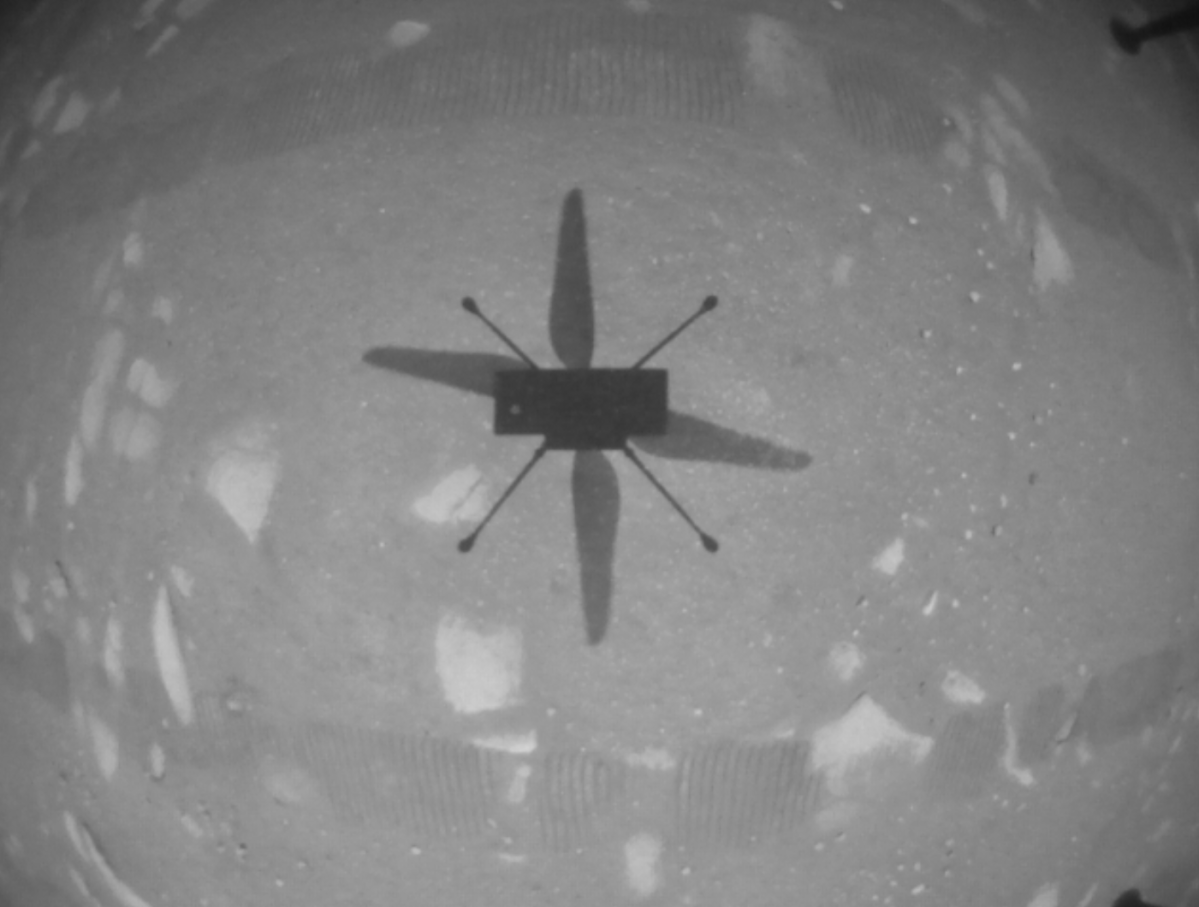
NASA’s Mars helicopter has made history.
Ingenuity, a small, four-pound rotorcraft that was dropped off by the agency’s Perseverance rover earlier this year, became the first manmade object to achieve powered, controlled flight on the surface of another planet earlier this morning.
It’s a feat that could revolutionize the way we explore the surface of other planets, including Mars, in the medium-term future.
“You wouldn’t believe what I just saw,” Perseverance’s official Twitter account wrote, taking the tone of a proud parent. Images taken by the rover from several hundred feet away show the tiny helicopter zip up several feet into the air after spinning up its twin rotors.
The helicopter spun up its wings to 2,500 revolutions per minute — much faster than helicopter blades back on Earth — and flew to a height of around ten feet. It managed to hover there for roughly 30 seconds before making its descent.
The news comes after Ingenuity had to delay its flight by roughly a week to complete a software update.
During its historic first flight, Ingenuity — “the little rotorcraft that could,” as NASA’s Jet Propulsion Lab (JPL) dubbed it this morning — took the time to snap a picture of the dusty area below it. Its shadow can be seen imprinted below — more unmistakable proof that the helicopter actually did take flight.

The engineers at NASA’s Jet Propulsion Lab were ecstatic. Elated after years of hard work coming to fruition, Ingenuity project manager MiMi Aung could be seen ripping up contingency papers on camera.
“Ingenuity’s reporting that it has performed spin up, take off, climb, hover, descent, landing, touchdown, and spin down,” Håvard Grip, Ingenuity chief pilot at JPL, could be heard saying, followed by cheers and applause in the control room.
“Ingenuity has performed its first flight — the first flight of a powered aircraft on another planet!” he added.
“We’ve been talking for so long about our Wright brothers moment,” Aung said. “And here it is.”
“As an homage to the two innovative bicycle makers from Dayton, this first of many airfields on other worlds will now be known as Wright Brothers Field,” NASA associate administrator Thomas Zurbuchen wrote in a tweet commemorating the moment.
It’s a groundbreaking moment in off-world planet exploration.
“It’s important to have the aerial dimension in the context of human exploration of Mars, of which we’re dreaming [about], even now,” Zurbuchen said during NASA’s official stream.
“Perseverance got us to Mars,” NASA’s JPL Twitter account wrote . “With Ingenuity, we soar higher.”
More on Ingenuity: NASA Says Oops, Mars Helicopter Needs Software Update to Fly